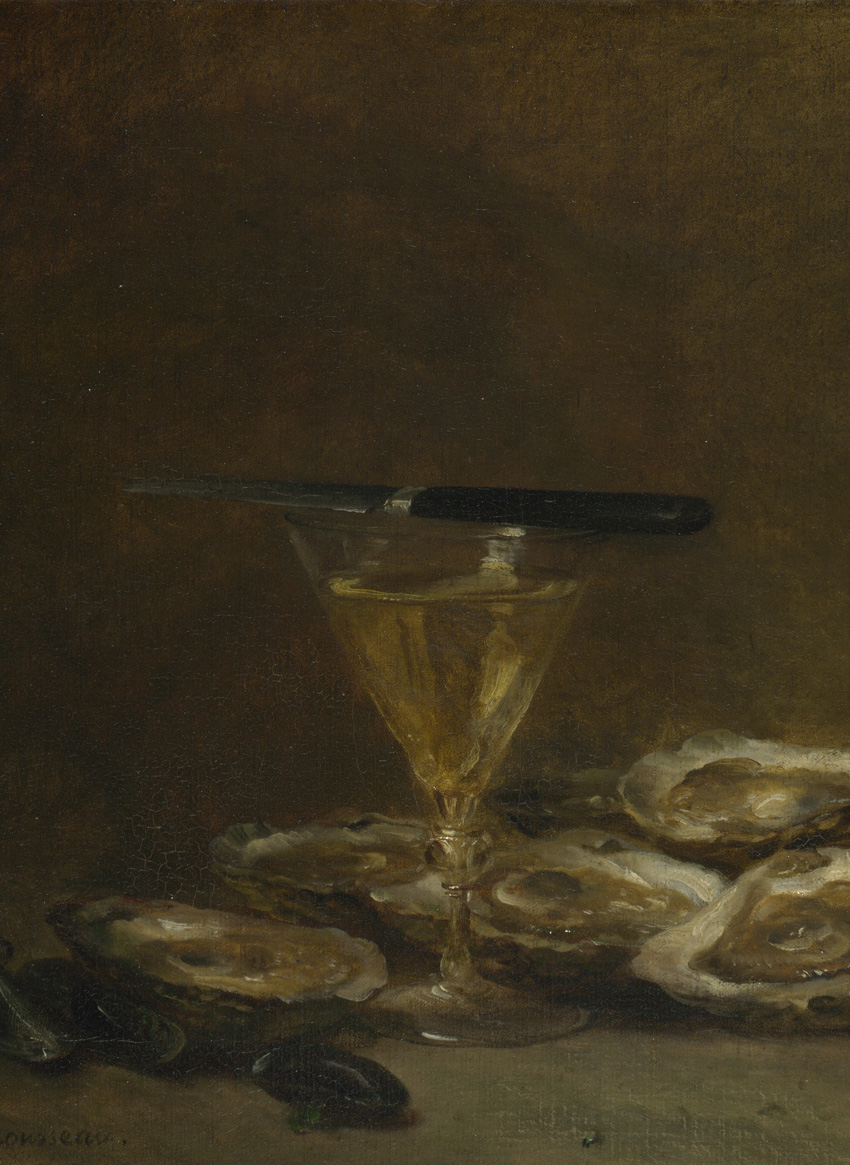The Portugal With Love Issue
That sounds like a luxurious old establishment. And because, after all, all Portuguese taverns are, with some margin for error, by the sea. And because the concept is not exclusive to Portugal. Tavern in English, bodega next door, locanda in Italy, baiúca in Brazil, there was wine, grape marc, beer and food to drink and cry over, because life outside was cold, dark and heavy. But there was warmth. Human warmth.
My parents lived in a kind of nerve center of the Margem Sul (South Bank), governed by bustling economic activity in the 1960s and 1970s, from the Lisnave shipyards to the cork industry, a place that welcomed so many Alentejans in search of a life that had become impractical in the cereal fields to the south. Carrying me in her womb, my mother's route to the bus stop (which would take her to her job as a telephone operator at a trucking company) had to pass a few meters from the door of her house, through the most famous tavern in Cova da Piedade. It was an establishment that lasted until I enjoyed it under the popular name of Viúva do Choco (she had lost her husband in the meantime). With two children in charge (the ones who would “break up the house” a few years later), that portent of a woman would be there all day, either frying cuttlefish or serving glasses of wine, between a counter and a shelf of jars of homemade piripíri. There were no tables and, at the time when my mother was forced to go through the door, there was still the typical barrel of sawdust, which the customers themselves would throw on top of the wine spilled on the floor, in order to “soak it up” and make it easier to sanitize the establishment afterwards. All this to say that my mother suffered horribly. Pregnant “cravings” for fried cuttlefish, and smelling it every day without even being able to taste it... Because taverns were always intended for men and a “lady” who passed through those doors was no longer a man. The result? I was born, in the words of Ti Natália, Senhora Dona Minha Mãe, “augmented” by fried cuttlefish. It's still with me today. Long menus with opulent steaks majestically garnished? There must be fried cuttlefish in the middle.
Very high cod steaks surrounded by chickpeas, chopped onion, parsley and a drizzle of the highest quality olive oil? I hesitate... But there's fried cuttlefish. Ethnic food with a thousand spices? I'm happy to eat it... But I always wonder: “Maybe I would have done better if I had fried cuttlefish at Trigo”, that legendary house in “Bolo da Noiva” (a geodesic landmark) in Vale Fetal, Margem SOL, a long way from Setúbal. Saturday lunch? Fried cuttlefish sandwiches at the Monte da Caparica Market or at the Almada Supply Market, among market traders and people for whom bifana is “for boys”. The great evolution of the tavern, tasca, botequim, in short, an establishment with no great decorative concerns that sells wine by the glass and cheap food, mostly in the form of snacks? Women are already going there. And let there be no doubt that this is what has turned the tasca, this institution, into a place where everyone wants to eat, to the point where establishments, where the less financially well-off can only dream of eating one day, are called “tasca”. Is it inverting the meaning of the thing? Yes, but it's also the acceptance that there's nowhere in the world where you can eat so well. Those who know about these things say, and so who are we to doubt it, that it was the Romans who invented the concept. They must be historians who are very fond of a glass of wine, because the Sumerians invented beer around 3,500 BC and, as we know, where there is alcohol there are several men consuming it together, in a kind of communion, where they complain about their wives and bosses and boast about their conquests, some with more detail than others when it comes to consummating the act. As the intoxication progresses, their hearts flee to their mouths and they reveal themselves in all their splendor, the sensitive ones in the most indulgent way, the bad ones in the worst way, in short, it's in vino veritas. Well, the Romans. Pandering as they were, when they weren't even bacchantes, it was in the thermopolies that they gathered to drown their sorrows, sometimes because the latter didn't earn enough to have more than two or three slaves, sometimes because the latter had bet everything on a gladiator who didn't last even one counterattack from the Christian-fueled lion, and the tabernum (shelter) continued to be so throughout the history of humanity. Fast forward, no group of men, where coexistence is the motto, would have survived the Black Death of the Middle Ages if it hadn't played an absolutely crucial role in their lives. Fast forward a few hundred years and the tavern even survived Romanticism and the hordes of artists, writers and scholars who began to gather in cafés with wooden interiors and golden glitter, the kind of gatherings where the subjects were anything but mundane. The people? They always knew where to be happy. To take communion in a church, you might have to walk a few kilometers. To go to a tavern? Any Portuguese village, no matter how small, couldn't do without one. A disliked place, especially by women who saw it as a place of perdition for their husbands, the number of taverns in Portugal even increased during the crisis that hit the world in the 1930s. With our wine exports falling dramatically, the Estado Novo implemented measures to increase domestic consumption, with fierce propaganda based on posters all over the country that read “Drinking wine is giving bread to 1 million Portuguese.”
The result was so significant that alcoholism spread and, in the 1950s, taverns multiplied, their customers were allowed to heat up their lunchboxes (as long as they consumed wine) and the negative charge associated with them was so great that, by law, justified by “reasons of public morality”, taverns were obliged to have come-and-go doors. It was also forbidden to have distilled spirits (which at the time were limited to brandies and pomace) in the fridge, which made things more “refreshing” and tended to be “repeatable.” Several times. It's called the “abaladiço”, that last glass which, in tavern slang, determines the continuation of alcohol consumption ad aeternum. After the 25th of April, which mainly brought about an unequivocal advance in mentality, the tascas lost their negative connotation and before long you had to travel quite a distance from Lisbon to return to that establishment where the food on offer was reduced to a plate of boiled eggs and a few cans of preserves to serve as a conduit, which is not to say that the old tradition of each customer bringing something “to eat”, a piece of cheese, a piece of sausage, an apple, a tan, or a piece of bread, was not perpetuated. In the capital, many taverns became “sales”, with essential goods that brought them closer to grocery stores. Today, the tasca has returned to fulfilling its age-old function, that of providing conviviality, now more inclusive and without gender dictates. The decoration is no longer limited to a few tree branches hanging on the wall, but all the memorabilia that reminds us of its geographical location, agricultural tools if we're inland, fishing related if we're on the coast and, in Lisbon, images of popular fado singers, preferably photographed there, in the house, of “famous people” in the same register and, increasingly, soccer motifs, such as club scarves or posters of championships won framed to perfection. Knowing how to identify a tasca is, after all, extremely important for those who want to eat well. Knowing how to distinguish it from a wannabe tavern, which is decorated to perfection but in the end will charge you Michelin-starred restaurant prices, is even more important. And easy. Walk in and feel the atmosphere. It should be humble, a little austere and even embarrassing. You can be sure that, within five or ten minutes, human warmth will prevail. And it's not the wine.
In this regard, the case of Lisbon requires special treatment. It's one of desperation. Because it's getting harder and harder to find a place that serves some of the demands that should be ours. A tasca was a place where “wine, olive oil and something to eat” were sold, according to Rafael Bluteau, an English lexicographer who died in Lisbon in 1734, not before writing the giant Vocabulário Português e Latino, meaning he knew his stuff. These establishments had been multiplying throughout Lisbon since medieval times and, by also selling simple, so-called “ordinary” meals, represented the livelihood of a fairly considerable part of the population who lived in houses without kitchens (a meal could be consumed on the spot or on a take-away basis and consisted mainly of boiled meats, fried fish, roasted onions and soups with sliced bread soaked in a meat broth seasoned with herbs and garlic), in addition to the fraternization combined with the consumption of wine which, not as often as one would like, led to disagreements between neighborhoods, serious aggression and even murder, which became inseparable from these spaces. Before leaving for Alcácer Quibir, King Sebastião was forced to publish his Laws and Provisions of 1570 to combat clandestinity, thefts and disagreements, which decreed that taverns would have to be in their own streets for better supervision, under the responsibility of the quadrilheiros (the term that became popular to define people who talk about gossip) who, on a tighter schedule (establishments “of the bad life” had to be closed after “the bell had rung” - from 8pm to 9pm - and “until the night was light”) had to keep order by looking for thieves, suspects and vagrants in the taverns. None of this was new to Lisboners, since in 1372 it was up to the mayor to go on the nightly rounds between the “ringing of the curfew bell and St. Vincent's Mass”, looking for Moors and Jews who were forbidden to leave the mouraria and judiarias (Alfama). In 1592, the legislation was tightened and prohibited gambling, serving wine and food for local consumption to slaves and “unmarried women who earn money for their bodies”, which entrenched the prejudice that lasted until half a century ago (and which still persists in remote Portugal). In 1863, what was the city's most important turning point in this regard took place. The Lisbon Slaughterhouse is built in Picoas (where Avenida Fontes Pereira de Melo would be today) and the entrails of large animals are a cheap product that the “tasqueiros” make the most of. Casas de Iscas was born, perhaps the only truly Lisbon dish, beyond the “legend” of old Brás, who invented codfish in his own style, and the jaquinzinhos, whose seasonal catch coincides with the surplus of tomatoes used to cook the rice.
With them (potatoes) was the most expensive version, served on a plate. A spoonful of onion was added to the bread. Less well-off people were also able to try the snack, but only the bread with the sauce. These were the baits that took root, many years later, in the very typical bifana, which, until the middle of the last century, also involved the “regime” of bread with sauce (for 5 tostões) and which we still see today bubbling away, in fewer and fewer establishments, in a huge frying pan that hasn't seen a scouring pad in as many years as the kilos of lard that have been added in the meantime. What happened to places like Adega dos Canários, in Cais do Sodré, where two gigantic wine barrels that also held several suspended hams set the scene for the consumption of sandwiches with a whole pig's ear, a fried squid opened on the spot, rissol torresmos and, on the plate, three sizes of horse mackerel (jack mackerel, butter and horse mackerel) or a hake head with two or three boiled potatoes? How long will the Adega dos Presuntos in Beco da Barbadela last? When will we stop feeling shocked when, at the once-typical Beira Gare, opposite the Rossio Terminal, we are charged €4.80 for an imperial and a prawn rissol? How much longer will we stubbornly call Zé dos Cornos, in Beco dos Surradores, Mouraria, a tourist mecca on a par with the Fátima Sanctuary, a “Portuguese” restaurant? How much longer will establishments like O Trevo, in Largo Camões, which still charges fair prices, resist gen- eralization? How many more places will have to close their doors before we see salvation emerge, often like when Taberna dos Papagaios opened in Arroios? The offer has become so limited that we now call a family-run establishment with reasonable quality, fair prices and wine by the jug a tasco. Whatever!
Things are so bad that this is a somewhat desperate plea: keep this list. Keep it under lock and key. Take your friends, enjoy, but make us sign a confidentiality agreement. At Alazão, in Alcântara, order the Arroz de Vinha d'Alhos. O Resina, in the once legendary Largo do Calvário, which before the pandemic still had A Fonte dos Passarinhos (which served Fried Birds), order the Friday Lamb in the Oven and a bottle of Verde Tinto to go with it. At Jorge d'Amália, in Ajuda, order the bitoque or the pica pau. At Tasquinha dos Grelhados or A Floresta da Estefânia, very close to each other, order something. At Tasca do Gordo, in Pedrouços, order the rabbit Caçador style. Adega dos Arcos, on the new Rua Verde, has perhaps the best prices in town. At Das Flores, on the street with the same name, order the Bacalhau à Gomes Sá and, from July, sardines. At Zé Pinto, in Benfica, the specialty is the bean rice that accompanies the grilled meats and the leite-creme, but the ham is second to none. Only in Mouraria, the place where it is often said that “there are no Portuguese left”, can you choose between Tasquinha da Isilda, with very few tables and where you can eat anything, O Trigueirinho and its bacalhau à Brás with real fries, and Cantinho do Custódio, perhaps the cheapest restaurant in Lisbon. In Campolide, O Petisca serves beautiful late-afternoon snails before we get down to business and O Cantinho do Alfredo has the best pataniscas with bean rice. In Santa Apolónia, Maçã Verde manages to charm with very low prices for more than honest cuisine, which can be compensated for with its surprising wine list. Castiça, in Lumiar, follows the same path, as does Tasca do Zé Russo, in Marvila, and O Cardoso da Estrela de Ouro, in Graça, with incredible cuisine but snails, unfortunately, only in take-away. I don't think we've yet reached the time when any of the above restaurants would take offense at being called a tasca. The truth is that this can only apply to those who respect the quality of what is most sacred to us: pastéis de bacalhau, pataniscas desse, esse com grão (properly soaked and cooked, not the “tinned” kind), pica pau, snails, octopus salad, baits with them, peixinhos da horta, gambas à guilho (which come from al ajillo), clams à bulhão pato, stewed or fried gizzards, pregos, bifanas, arrozes (octopus, sprouts, tomato, etc), fried fish (cuttlefish included), stuffed squid, pipis (you can be sure of the quality of the establishment when they ask you “with or without legs? “), seafood açorda or the rigidity and saltiness of boiled shrimp, oh dear Bacchus, if this religion of ours is vast.
Translated from the original in Vogue Portugal's "Portugal With Love" Issue, published June 2024. Full stories and credits in the print issue.
Most popular

Relacionados
.jpg)
.jpg)






